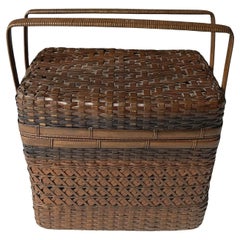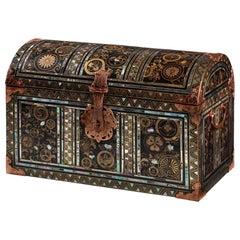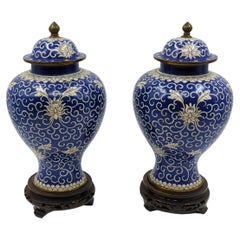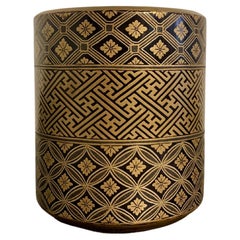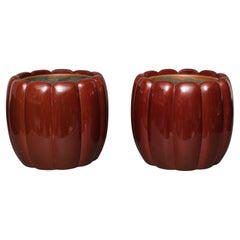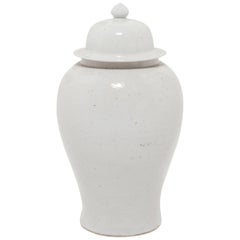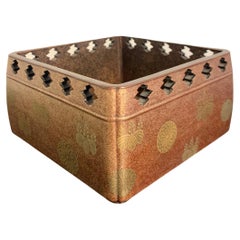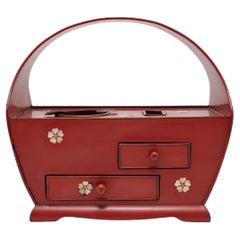Copper Lacquer
20
3
to
14
8
23
21
23
6
10
4
3
3
1
9,501
465
281
115
43
22
22
18
4
3
Material: Copper
17th Century Japanese Export Lacquer Cabinet with Depiction the Dutch Tradepost
Located in Amsterdam, NL
A highly important Japanese export lacquer cabinet with depiction of the Dutch East India Company tradepost Deshima and the annual Dutch delegation on its way to the Shogun in Edo
Edo period, circa 1660-1680
H. 88 x W. 100.5 x D. 54 cm
This cabinet includes a later European japanned stand, but also a modern powder-coated steel frame.
The latter can be designed and added to your specific needs.
The sides and front of the rectangular two-door cabinet are embellished in gold and silver hiramaki-e and takamaki-e on a black roiro lacquer ground with a continuous design. The two doors depict a long procession of numerous figures travelling on foot and horseback along buildings and a pagoda into a mountainous landscape. This is the annual court journey, Hofreis, of the Dutch from Nagasaki to the Shogun’s court in Edo. Three horseback riders are dressed as Dutch merchants and a fourth figure, probably het Opperhoofd, is seen inside a palanquin, norimon. Just about to cross the bridge, two men are carrying a cabinet like the present one.
Many Japanese figures on either side of the procession are engaged in various activities; some play musical instruments on board of small boats, others are fishing; figures inside buildings are depicted playing go, and farmers are tending to their rice paddocks. The upper part of the right door shows a large mansion, probably the local daimyo’s castle, with men kneeling before a man in the central courtyard.
The court journey fits in with the foreign policy of the shogunate which accorded a role to the VOC alongside China, Korea, and the Ryukyu Islands who also had to pay tribute. However, the VOC employees were traders, having low status in Japan’s social hierarchy, and they were received with less deference than were the state embassies from Korea and the Ryukyu Islands. Nevertheless, the contacts with the Dutch were a welcome source of information to the Shogun about Europe and European science and technology.
The left side of the cabinet depicts, in mirror image, a rare view of the artificial fan-shaped Deshima Island, the trading post for the Dutch in Japan. The island, where the Dutch flag flies, is surrounded by small Japanese boats and an anchored three-masted fluyt (cargo ship), flying Dutch flags, with on the stern the VOC monogram. On the bottom right a busy street of Nagasaki is shown, bordered by shops and leading up to the stone bridge. On the island the trees are beautifully painted, two cows can be seen, and the flagpole, all in very fine detail. Dutchmen and enslaved Malay are visible outside the buildings and two Japanese figures, probably guards, sit in a small hut in the centre.
A maximum of fifteen to twenty Dutchmen lived on the island at any time and soldiers or women were not allowed. Restrictions on Deshima were tight, and the merchants were only allowed to leave the island by special permission. The Opperhoofd had to be replaced every year, and each new Opperhoofd had to make a court journey to pay tribute, present gifts, and to obtain permission to Margaret Barclay eep on trading. In the distance, many birds fly above the hills and a four-story pagoda can be seen. The right side of the cabinet is painted with other horse riders and their retinue journeying through mountains.
The pair of doors to the front open to reveal ten rectangular drawers. The drawers are decorated with scenes of birds in flight and landscapes with trees and plants. The reverse of the left door with two thatched buildings, one with a ladder, underneath a camelia tree with large blooms; the right door with a three-story pagoda nestled among trees and both doors with a flying phoenix, ho-oo bird. The cabinet, with elaborately engraved gilt copper mounts, hinges, lock plates and brass handles, is raised on an 18th-century English japanned wood stand.
A pair of large cabinets...
Category
17th Century Japanese Edo Antique Copper Lacquer
Materials
Copper, Gold
Fine Antique Japanese woven copper box basket Asian Antiques Ikebana 中国古董
Located in London, GB
A fine a rare Japanese box masterly woven in copper, the box with lid and handles
dates to 19th century Meiji Period, and it imitates the Ikebana bamboo basketry style
Height 17...
Category
19th Century Japanese Antique Copper Lacquer
Materials
Copper
A rare Japanese Namban export lacquer coffer with Mon emblems
Located in Amsterdam, NL
Late Momoyama period, late 16th century
The coffer is decorated in black lacquer, urushi, on cedar wood, decorated with gold dust and silver, maki-e, and nashiji, mother-of-pearl, r...
Category
16th Century Japanese Antique Copper Lacquer
Materials
Silver, Copper
Antique Chinese Cloisonne Blue White General Jar Baluster Vase Garniture w Stand
Located in Richmond, CA
This exquisite matching pair of antique Chinese export blue and white cloisonné covered general jars is a fine example of the intricate artistry and craftsmanship of traditional Chin...
Category
Early 20th Century Chinese Chinese Export Copper Lacquer
Materials
Copper, Enamel
Japanese Lacquer Incense Burner, Koro, Edo period, mid 19th century, Japan
Located in Austin, TX
An elegant and refined Japanese lacquer koro, incense burner, in the form of a chaire, tea caddy, Edo Perio, mid 19th century, Japan.
The barrel shaped koro formed as a traditional ...
Category
Mid-19th Century Japanese Edo Antique Copper Lacquer
Materials
Copper
Pair of Japanese Red Lacquered Hibachi 火鉢 'Fire Bowls' Shaped like Flowers
Located in Amsterdam, NL
Pair of magnificent hibachi (fire bowls) shaped like chrysanthemum flowers (kiku) and finished with high quality ‘bordeaux red’ lacquer.
Each is carved from a solid piece of wood with fine elegant lobes representing the petals.
The interior fitted with a copper lining, for the coals, with a nice patina.
A pair of hibachi in this colour and with this kind of quality of Material is rare to find!
In Japan chrysanthemums are believed to represent happiness, longevity, rejuvenation and nobility.
Including original wooden tomobako (storage box).
In Western culture these bowls are often used as decorative flower pots...
Category
20th Century Japanese Copper Lacquer
Materials
Copper
Japanese Carved Cinnabar Lacquer Inro, Meiji Period, late 19th c, Japan
Located in Austin, TX
A good Japanese carved cinnabar three case inro with mixed metal ojime, Meiji period, late 19th century, Japan.
The three case inro of standard form, comprised of three container se...
Category
Late 19th Century Japanese Meiji Antique Copper Lacquer
Materials
Silver, Copper
Japanese Lacquer Writing Box, Suzuribako, Edo Period, 18th Century, Japan
Located in Austin, TX
An exceptionally fine and unusual Japanese lacquer writing implements box, suzuribako, in the form of a zither, koto, Edo Period, 18th century, Japan. With a modern wood storage box,...
Category
18th Century Japanese Edo Antique Copper Lacquer
Materials
Gold, Silver, Copper
Japanese Export Nagasaki Lacquer Box with the Portrait of Napoleon Bonaparte
Located in Amsterdam, NL
A Japanese export Nagasaki lacquer tobacco box with the portrait of Napoleon Bonaparte
Edo-period, circa 1810
The box in black lacquer on copper, ...
Category
19th Century Japanese Edo Antique Copper Lacquer
Materials
Copper, Gold
Japanese Lacquer Hibachi with Imperial Chrysanthemum, Meiji Period, Japan
Located in Austin, TX
A simple and elegant Japanese lacquer hibachi stand with imperial chrysanthemum mon and copper liner, now modified as an usubata, late Meiji Period, ci...
Category
Early 1900s Antique Copper Lacquer
Materials
Copper
Japanese Red Lacquer Negoro Hibachi with Rabbits, Edo Period, c. 1850
Located in Chicago, IL
With monumental scale and beautiful, hand-carved details, this remarkable red lacquer hibachi is a true work of art. Designed to hold glowing embers, hibachi vessels such as this were used for cooking or as a source of heat in Japanese homes. Placed under a low wood kotatsu table...
Category
Mid-19th Century Japanese Edo Antique Copper Lacquer
Materials
Metal, Bronze, Copper
Japanese Antique Lacquer Maki-E Miniature Hasami-Bako with Copper Mounts
Located in Atlanta, GA
A Japanese lacquered box with lid in the shape of a miniature Hasami-Bako (traveling chest) circa late 18 to early 19th century of the Edo period. The black box is decorated with fin...
Category
Early 19th Century Japanese Japonisme Antique Copper Lacquer
Materials
Copper
Four magnificent 17th-century Japanese export gold lacquer Liquor or Gin bottles
Located in Amsterdam, NL
A set of four extremely rare and important pictorial-style Japanese export lacquer bottles
Edo-period, circa 1650-1680
H. 15.5 x W. 6.9 x B. 7.6 cm (each)
The bottles with red cop...
Category
Mid-17th Century Japanese Edo Antique Copper Lacquer
Materials
Copper, Gold, Silver
Japanese Red Lacquer Hibachi, c. 1900
Located in Chicago, IL
Designed to hold glowing embers, hibachi vessels were used for cooking or as a source of heat in Japanese homes. Placed under a low wood kotatsu table wi...
Category
Early 20th Century Japanese Meiji Copper Lacquer
Materials
Copper
Red lacquer Festival Flag Support abundantly inlaid with mother-of-pearl, Japan
Located in Amsterdam, NL
Rare museum-worthy Japanese lacquered wooden festival support for a flag. In feudal Japan this kind of supports sat on the back of a horse or ox during pr...
Category
19th Century Japanese Antique Copper Lacquer
Materials
Metal, Bronze, Copper
Persimmon Box in Black Lacquer by Robert Kuo, Limited Edition
By Robert Kuo
Located in Los Angeles, CA
Persimmon Box
Black Lacquer
Hand Repousse
Copper Base
Limited Edition
Lacquer is a laborious and time-consuming process. After it is tapped from the
trees, lacquer needs to b...
Category
21st Century and Contemporary Chinese Copper Lacquer
Materials
Copper
Persimmon Box in Cream Lacquer by Robert Kuo, Limited Edition
By Robert Kuo
Located in Los Angeles, CA
Persimmon box
Black lacquer
Hand repousse
Copper base
Limited Edition
Lacquer is a laborious and time-consuming process. After it is tapped from the
trees, lacquer needs to b...
Category
21st Century and Contemporary Chinese Copper Lacquer
Materials
Copper
Early 17th century 'Incense Burner' ( Koro)
Located in Hudson, NY
Early 17th century incense burner( Koro) in basket weave nashiji lacquer pattern with chrysanthemum mons (the national symbol of Japan). Copper grill with detailed waves pattern. Foo...
Category
Early 17th Century Japanese Antique Copper Lacquer
Materials
Copper
Extremely Japanese Rare Lacquer Plaque Depicting Russian St. Petersburg
Located in Amsterdam, NL
An important Japanese lacquer Maki-É Panel Depicting St. Petersburg on the River Neva, with the winter palace on the left and the academy of science on the right, 18th century.
Nagasaki, 1780-1800
In black lacquer on copper, the front decorated in maki-é, the back inscribed, Vue Perspective des Bords de la Neva en descendant la Rivière entre le Palais d'hyver de sa Majesté Impériale et les batiments de l'Académie des Sciences à St Petersburg in gold and inlaid with flowers in mother of pearl.
Measures: H 23 x W 39 cm
The present plaque is identical to one in the Museum of Japanese History in Sakura and another one in the Museum of Peter the Great in St. Petersburg. (see: Oliver Impey & Christiaan Jörg, Japanese Export Lacquer, 1580-1850, p. 52-53)
This last one was given to Catherine the Great in 1794 by the Swedish medical doctor Johan Arnold Stutzer who had served with the VOC in Deshima in 1787-1788. Apparently, such plaques were not unique and may have been made in several copies. This was certainly the case with the smaller lacquer oval portrait medallions (see for instance Uit Verre Streken, June 2017, no. 62)
The scene of St. Petersburg was copied from an optical print taken by Stutzer to Japan, as shown by Yasumasa Oka of the Kobe City Museum. Stutzer in his diary writes: “I am the first to bring them (i.e. the Japanese) original pictures such as a view of St Petersburg and of Rudolf XV on horseback and try to have them made (in lacquer). According to the Japanese, it is the first time that these two pictures will be copied. Other products that I also ordered, for example, pictures of sea battles, are also appreciated as absolute masterpieces”.
For two lacquered plaques depicting the sea battle of Dogger Bank in 1781 between the Dutch and the English navies, see Uit Verre Streken, December 2013, nr. 39 and March 2015, nr 56. Johan Strutzer at the same time also presented six beautiful Japanese glass telescopes to Catherine the Great of Russia, like the two Japanese glass telescopes illustrated in Uit Verre Streken, March 2015, item 59 and 60 and the one in the Kobe City Museum (illustrated in: Japan Envisions the West, 16th-19th Century Japanese Art...
Category
Late 18th Century Japanese Antique Copper Lacquer
Materials
Copper
Japanese Lacquer Hibachi (Brazier)
Located in Hudson, NY
Japanese Lacquer Hibachi (Brazier), Meiji period (1868 - 1912) Box- shaped Japanese hibachi with mother of pearl inlay, handles on two sides, and a cop...
Category
1880s Japanese Meiji Antique Copper Lacquer
Materials
Copper
Temple Bell Pot with Copper Band and Black Lacquer
By Robert Kuo
Located in Los Angeles, CA
Antique copper finish on copper band
Hand repousse´
Black lacquer
Contemporary
Limited Edition
Chinese lacquer is a highly regarded art form an...
Category
21st Century and Contemporary Chinese Copper Lacquer
Materials
Copper
Japanese Edo Period Lacquer and Mother-of-Pearl Embellished Stoneware Koro
Located in Austin, TX
A highly unusual Japanese crackle glazed koro (incense burner or censer), lacquered and inlaid with mother-of-pearl embellishment, signed Gyokusen, Ed...
Category
19th Century Japanese Edo Antique Copper Lacquer
Materials
Copper
Meiji Period Japanese Lacquered Gold Two-Part Box
Located in Hudson, NY
This very beautifully lacquered box is from the Meiji period in Japan. Made between 1864 and the end of the 19th century this small two tied box would have bee...
Category
19th Century Japanese Other Antique Copper Lacquer
Materials
Copper, Gold
Related Items
Japanese Lacquer and Cinnabar "Samurai" Cabinet, Inaba Family, Edo Period
Located in Troy, NY
Exceptionally large and rare lacquer cabinet. According to the heraldry, visible on the headgear in one of the panels, it was made for the Inaba family, a high ranking Daimyo family,...
Category
Late 19th Century Japanese Edo Antique Copper Lacquer
Materials
Wood
Chinese White Glazed Baluster Jar
Located in Chicago, IL
Defined by its rounded body, high shoulders, and domed lid, the time-honored form of the Chinese baluster jar takes on a streamlined look in this contempo...
Category
21st Century and Contemporary Chinese Minimalist Copper Lacquer
Materials
Porcelain
Japanese Woven Bamboo Ikebana Basket
Located in Atlanta, GA
A Japanese woven bamboo basket with handle from early 20th century, circa end of Meiji to Taisho period. The basket was constructed in the form o...
Category
Early 20th Century Japanese Japonisme Copper Lacquer
Materials
Bamboo
Antique Chinese Wine Container Canteen
Located in New York, NY
Antique wine or water container canteen made of wood, cloth, leather and parchment.
Wonderful patina to the surface.
The Characters on the front reference a medicine shop and on back some mention of the Long March. The 6,000-mile historic trek of the Chinese communists...
Category
1930s Chinese Qing Vintage Copper Lacquer
Materials
Leather, Lacquer, Parchment Paper, Wood
Antique Chinese Lacquer Tray With Dragons
Located in Houston, TX
Antique Chinese Lacquer Tray With Dragons.
Our stunning Chinese lacquer tray is rectangular with two handles and hand decorated with gold ...
Category
1920s Chinese Chinoiserie Vintage Copper Lacquer
Materials
Lacquer
Japan Red Lacquered Box 19th Century
Located in Beuzevillette, FR
Beautiful Japanese box in red lacquered wood. The lid is decorated with flowering magnolia branches and signed by the artist. The inside of the box is covered with a paint loaded wit...
Category
Late 19th Century Antique Copper Lacquer
Materials
Wood
Chinese Blue and White Perpetual Harmony Baluster Jar
Located in Chicago, IL
This contemporary lidded baluster jar continues the centuries-old tradition of Chinese blue-and-white porcelain ware. Painted with cobalt pigments for a brilliant blue finish, the ja...
Category
21st Century and Contemporary Chinese Chinese Export Copper Lacquer
Materials
Porcelain
Pair of Large Antique Japanese Hokai Lacquer Boxes
Located in Atlanta, GA
A pair of Japanese lacquered lidded Hokai boxes with chased brass hardware and original ropes. Hokai boxes are traditionally used in Japan as the containers ...
Category
Early 20th Century Japanese Japonisme Copper Lacquer
Materials
Wood, Lacquer
Japanese Lacquer Box with Fine Maki-e Decoration Meiji Period
Located in Atlanta, GA
A lacquered wood box with lid from Japan circa 19th century Meiji Period. The finely decorated box was used to store paper slips and small documents on the desk. It is overall finished with black lacquer (kuro) with sparse Mura-Nashiji effect outside and on the top surface of the lid, there are three Komainu, (sometimes known as Shishi or Japanese lions) frolicking and forming a circle in lively motion. Komainu are auspicious animals in Japanese cultures in both Shinto and Buddhism tradition. Originally from China, these animals symbolizes guardians to ward off evil spirits. Hiramaki-e was used in combination with carving and combing to render the lions with various surface textures. A gilt border with an slight angle was given to the lid and even the thin band is decorated with miniature floral scrolls. The interior of the box was finished in a dense nashiji. Underneath the lid, a cluster of peonies open lavishly by two gentle mounts. Takamaki-e (high relief) in both gold and silver were...
Category
Late 19th Century Japanese Japonisme Antique Copper Lacquer
Materials
Wood, Lacquer
Japanese Lacquer Hokai Box, 19th Century
Located in Pasadena, CA
This is a good example of a traditional Japanese Hokai shell storage box for the Kai-awase game. This box is well-detailed in chased brass appliques and makie. The box is in overall ...
Category
Late 19th Century Japanese Japonisme Antique Copper Lacquer
Materials
Wood, Lacquer
Antique Japanese Lacquered Incense Box Kobako in Kodaiji Style
Located in Atlanta, GA
An antique lacquered small box that was likely used to contain incense powder (it is called Kobako in Japanese), circa early to mid-19th century of the Edo...
Category
19th Century Japanese Edo Antique Copper Lacquer
Materials
Wood, Lacquer
Japanese Lacquered Maki-e Fubako Edo Period
Located in Atlanta, GA
A Japanese lacquered wood fubako (a box used to store document or small scroll painting), circa second half of 19th century late Edo period. The rectangular box features an unusually deep lipped lid with slightly rounded corners, a conforming lower box that is almost entirely covered by the lid which has two bronze medallion rings with tasseled...
Category
19th Century Japanese Edo Antique Copper Lacquer
Materials
Wood, Lacquer
Previously Available Items
Japanese Tabako-Bon High Sided Tray with Imperial Mon, Meiji Period, Japan
Located in Austin, TX
An attractive Japanese maki-e lacquer high sided carrying tray for smoking implements, tabako-bon, Meiji Period, mid to late 19th century, Japan.
The elegant lacquer tabako-bon tr...
Category
Late 19th Century Meiji Antique Copper Lacquer
Materials
Copper
H 4.38 in W 8.25 in D 8.25 in
Japanese Red Lacquer Tabako-Bon with Sakura Inlay, c. 1900
Located in Chicago, IL
This decorative box is a Japanese tabako-bon, or 'tobacco tray,' used to store tobacco and smoking accessories. Believed to have evolved from the traditional accessories of Japanese ...
Category
Early 20th Century Japanese Meiji Copper Lacquer
Materials
Copper
Japanese Gilt Hiramaki-e Tabako-Bon, c. 1930
Located in Chicago, IL
This box with many drawers is a Japanese tabako-bon, or 'tobacco tray,' used to store tobacco and smoking accessories. Believed to have evolved from the traditional accessories of Ja...
Category
1930s Japanese Taisho Vintage Copper Lacquer
Materials
Copper
19th Century Japanese Plum Lacquer and Gilt Box with Etched Copper Mounts
Located in Stamford, CT
Lovely dome top Japanese plum lacquer box with beautiful cherry blossom, bamboo and mimosa decoration. Take a good look at the detail in the gilding, rea...
Category
Late 19th Century Japanese Meiji Antique Copper Lacquer
Materials
Copper
Small Japanese Lacquer and Metal Mounted Hokkai, Edo Period, 19th Century, Japan
Located in Austin, TX
A charming Japanese black and green lacquer hokkai, picnic box, with copper and gilt copper mounts, Edo Period, early 19th century, Japan.
The small hokkai of square shape and su...
Category
Early 19th Century Japanese Edo Antique Copper Lacquer
Materials
Copper
H 10.75 in W 12.5 in L 10.75 in
Pair of Japanese Chrysanthemum Shaped Red Lacquer Hibachi, Early 20th Century
Located in Prahran, Victoria
A striking pair of chrysanthemum shaped hibachi. They are a warm and inviting shade of cherry red lacquer, with a copper lining, aged with a mottled verdigris patina. While they woul...
Category
Early 20th Century Japanese Copper Lacquer
Materials
Copper
Small Japanese Lacquer Incense Burner, Koro, with Mon, Edo Period, 18th Century
Located in Austin, TX
An exceptional Japanese black lacquer lobed incense burner, akoda koro, decorated with mon, Edo Period, 18th century, Japan.
The small censer of lobed melon form, called an akoda ...
Category
18th Century Japanese Edo Antique Copper Lacquer
Materials
Copper
Japanese Lacquer Melon Shaped Incense Burner, Akoda Koro, Edo Period
Located in Austin, TX
A very fine Japanese lacquer incense burner, akoda koro, of melon form with a design of autumnal grasses and chrysanthemum blossoms, with a gilt metal openwork cover, Edo Period, 17t...
Category
Early 18th Century Japanese Edo Antique Copper Lacquer
Materials
Copper
Japanese Black Lacquer Vase with Carved and Gilded Geometric Design circa 1930
Located in Prahran, Victoria
One glance at this unusual vase and images of Josephine Baker and Gustav Klimt come swirling into one's mind. Evocative of the style of the day, gilded in a geometry of shapes, these...
Category
Early 20th Century Japanese Copper Lacquer
Materials
Copper
Wellman Peck & Co. Large Lacquer Decorated Japanese Tea Box, Early 1900s
Located in San Francisco, CA
An especially rare, wonderfully decorated, and impressively sized early 1900s Wellman Peck & Co. lacquered wood tea box made in Japan for export and comme...
Category
Early 1900s Japanese Japonisme Antique Copper Lacquer
Materials
Metal, Copper
H 20.5 in W 16.5 in D 16.5 in
Pair of Japanese Black and Gold Lacquer Round Hokkai, Picnic Boxes
Located in Austin, TX
An elegant pair of Japanese late Meiji period hokkai, or picnic boxes. Crafted of black lacquer, and decorated in maki-e, with gilt copper mounts.
The body shaped as a series of sta...
Category
1890s Japanese Meiji Antique Copper Lacquer
Materials
Copper
Japanese Buddhist Offering Table, circa 17th Century
Located in Prahran, Victoria
Rare Japanese red and black lacquered Buddhist offering table decorated with gilded floral and butterfly motifs and applied incised gilt copper hardware, early Edo circa 1650.
Dim...
Category
Mid-17th Century Japanese Edo Antique Copper Lacquer
Materials
Copper
Recently Viewed
View AllMore Ways To Browse
Maki E
Antique Japanese Lacquer Tray
Japanese Lacquer Tray Antique
Antique Chinese Cinnabar
Black Lacquer Asian Floral
Vintage Japanese Lacquer
Red Lacquer Cinnabar
Lacquer Ware
Asian Small Lacquer Box
Japanese Family Crest
Black Cinnabar
Japanese Black Lacquer Tray
Kyoto Lacquer
Chinese Carved Cinnabar
Japanese Mother Of Pearl Art
Burmese Red Lacquered
Japanese Pearl Inlay
Large Japanese Tray
